Nearly 3 Billion Birds Gone
A new study finds steep, long-term losses across virtually all groups of birds in the U.S. and Canada
Read the Full Study
Published online in Science, Sept. 2019.
Feature Story
In Living Bird magazine
Help Birds
With 7 Simple Actions
NARRATOR: Birds are part of our lives. They fill the air with song, Inspire us with their beauty. And make their homes in the most unexpected places. Sometimes they’re even our neighbors. But the birds we love, are vanishing. An alarming new study reveals that the population of North American birds has dropped nearly 30% since 1970. That’s almost three billion birds gone. Vanished from our forests, grasslands, and backyards, in less than the span of a human lifetime. Some of the hardest hit are familiar birds: orioles, meadowlarks, swallows, warblers. What’s driving this decline?
NARRATOR: Birds are losing the habitats they need, places to live, find food, rest, and raise their young. They face many other threats as well—from free-roaming cats and collisions with glass, to toxic pesticides and insect declines. Climate change will compound all of these problems and accelerate the loss of habitats birds need. This enormous loss of birds signals a broader crisis in the natural world one that ultimately affects us all. But it’s not too late….
NARRATOR: Our actions on behalf of birds make a positive difference and benefit the entire planet. Thanks to strong conservation efforts and habitat management, many waterfowl and formally endangered species are now flourishing. It’s time to expand these conservation efforts to help the rest of our birds recover too. With our help, they can be restored as a vital part of the American landscape, and a precious part of our lives. We’re united in pursuing better protections and increased support for birds… and you can help. Please, join us.
End of Transcript
Nearly 3 Billion Birds Gone Since 1970
The first-ever comprehensive assessment of net population changes in the U.S. and Canada reveals across-the-board declines that scientists call “staggering.” All told, the North American bird population is down by 2.9 billion breeding adults, with devastating losses among birds in every biome. Forests alone have lost 1 billion birds. Grassland bird populations collectively have declined by 53%, or another 720 million birds.
A staggering loss that suggests the very fabric of North America’s ecosystem is unraveling.
Cornell Lab director John Fitzpatrick and study coauthor Peter Marra
The Main Findings
Even Common Birds Are Vanishing
Common birds—the species that many people see every day—have suffered the greatest losses, according to the study. More than 90% of the losses (more than 2.5 billion birds) come from just 12 families including the sparrows, blackbirds, warblers, and finches.
The losses include favorite species seen at bird feeders, such as Dark-eyed Juncos (or “snowbirds,” down by 168 million) and sweet-singing White-throated Sparrows (down by 93 million). Eastern and Western Meadowlarks are down by a combined 139 million individuals. Even the beloved Red-winged Blackbird—a common sight in virtually every marsh and wet roadside across the continent—has declined by 92 million birds.
“We want to keep common birds common, and we’re not even doing that,” said Pete Marra, a study coauthor who formerly directed the Smithsonian Migratory Bird Center and now directs the Georgetown Environment Initiative.
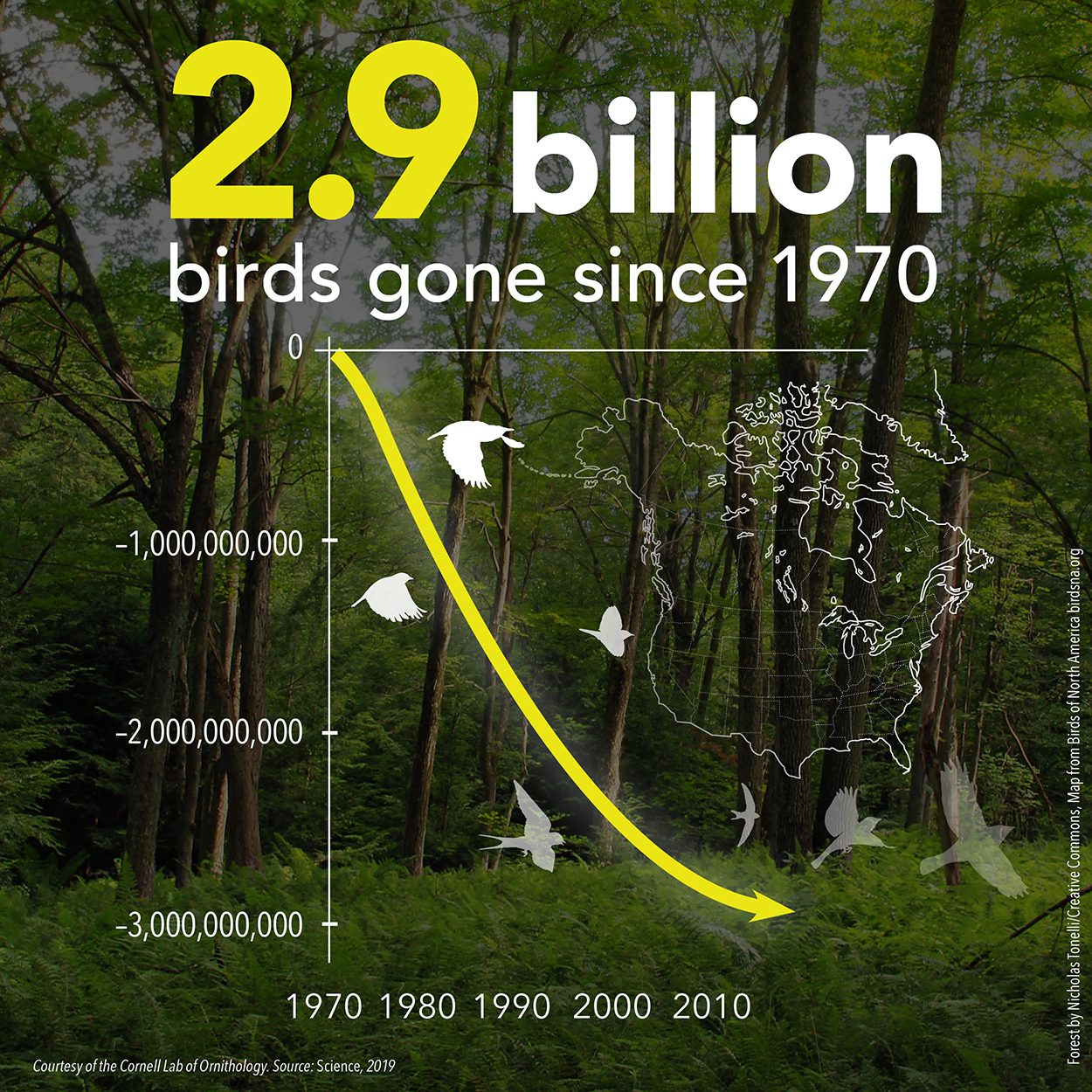
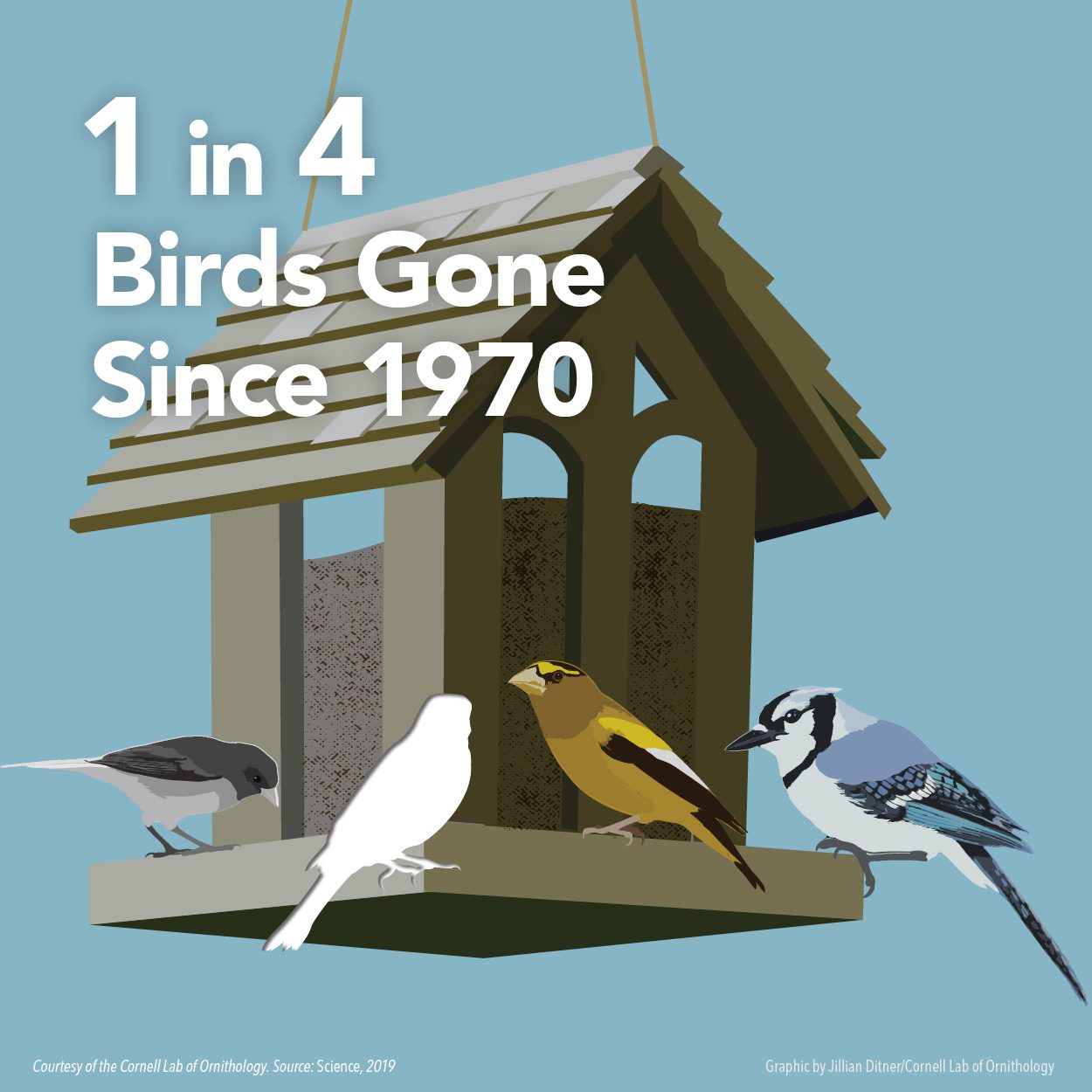
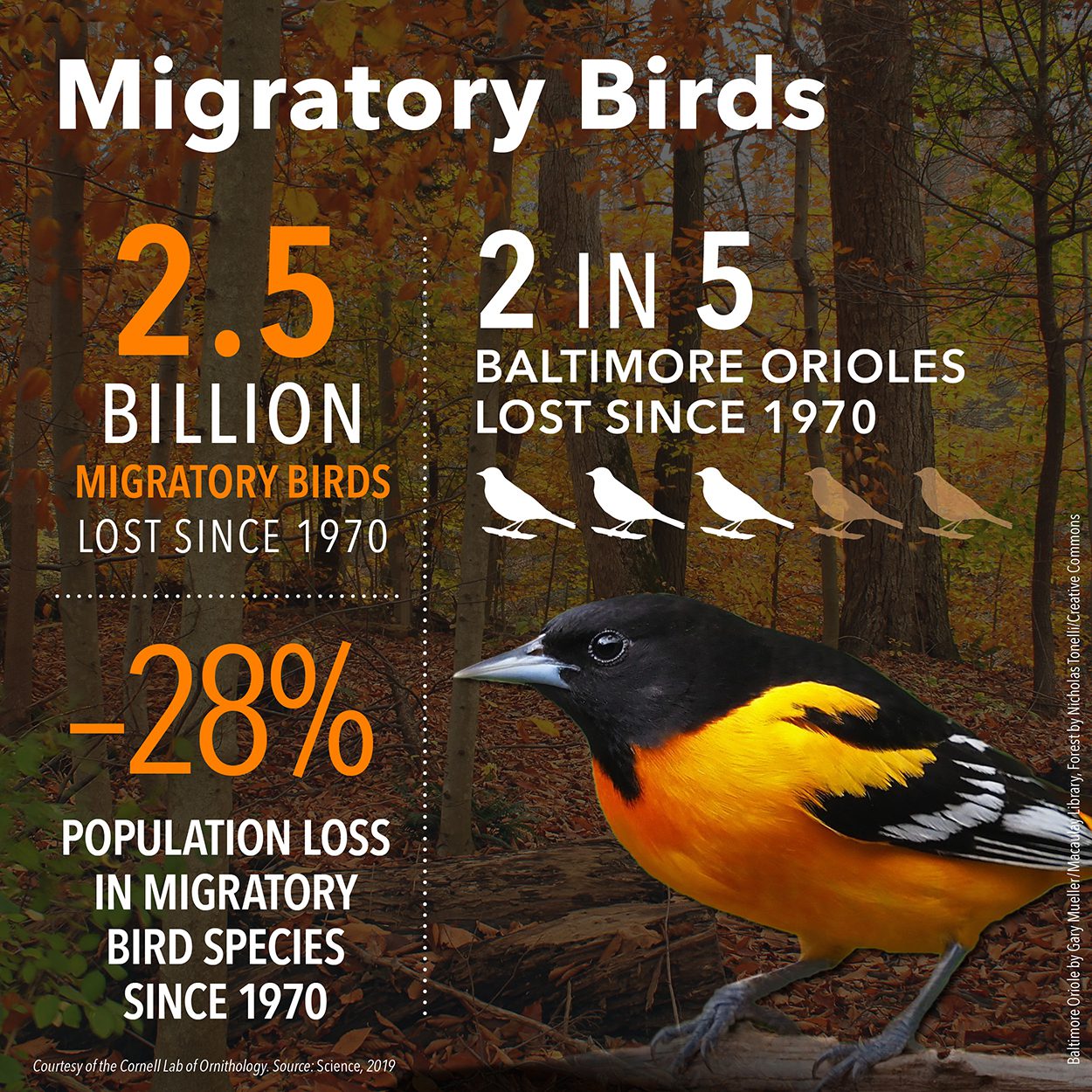
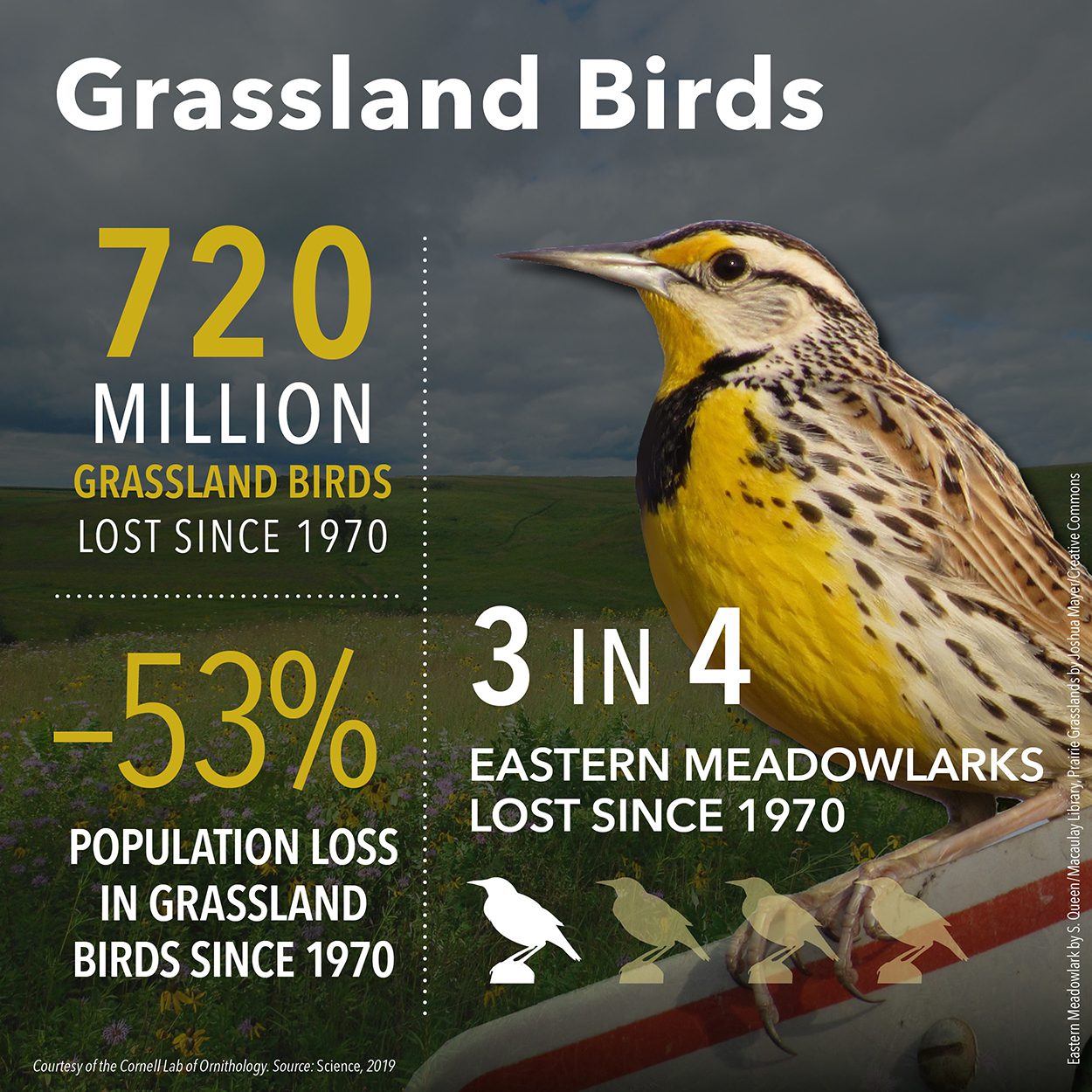
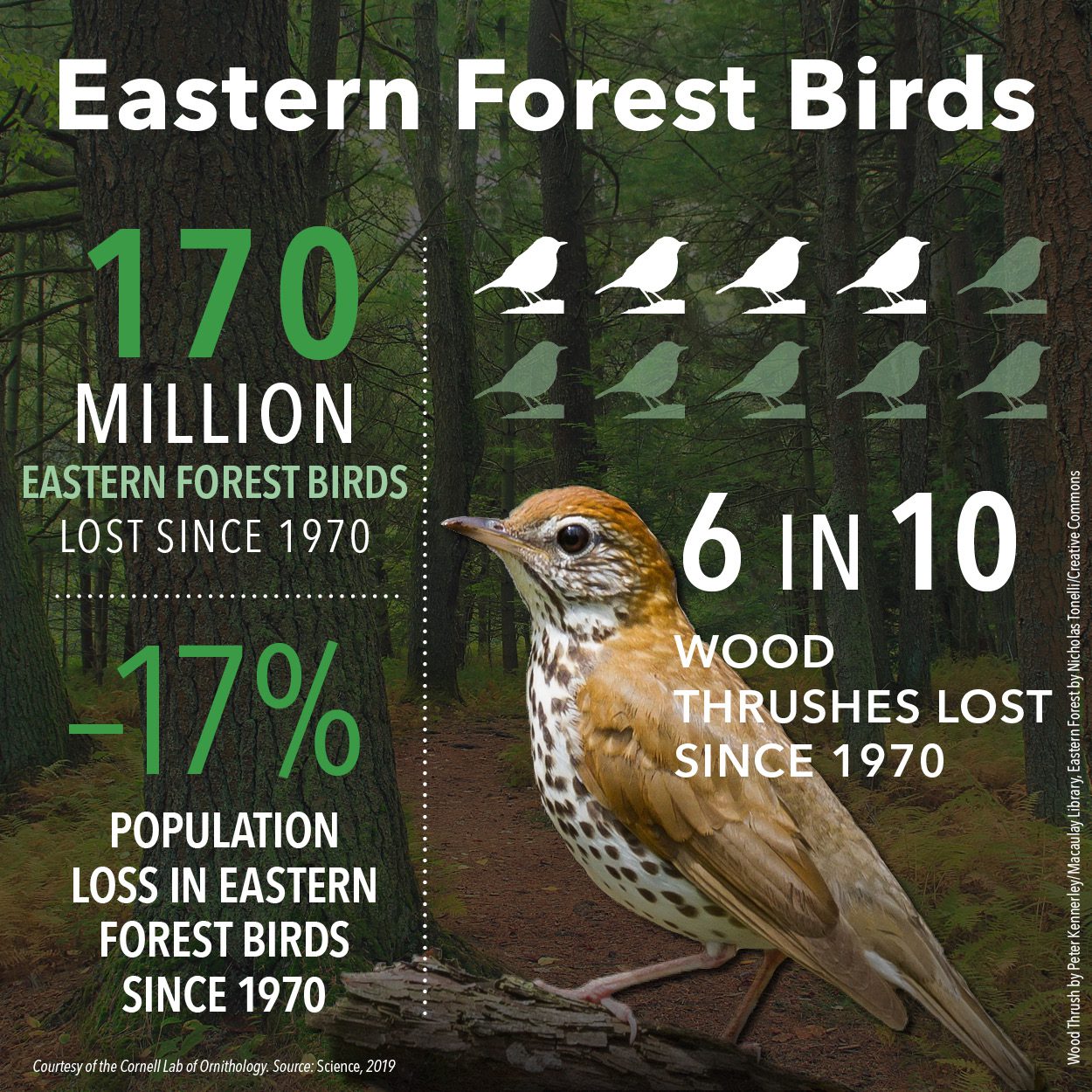
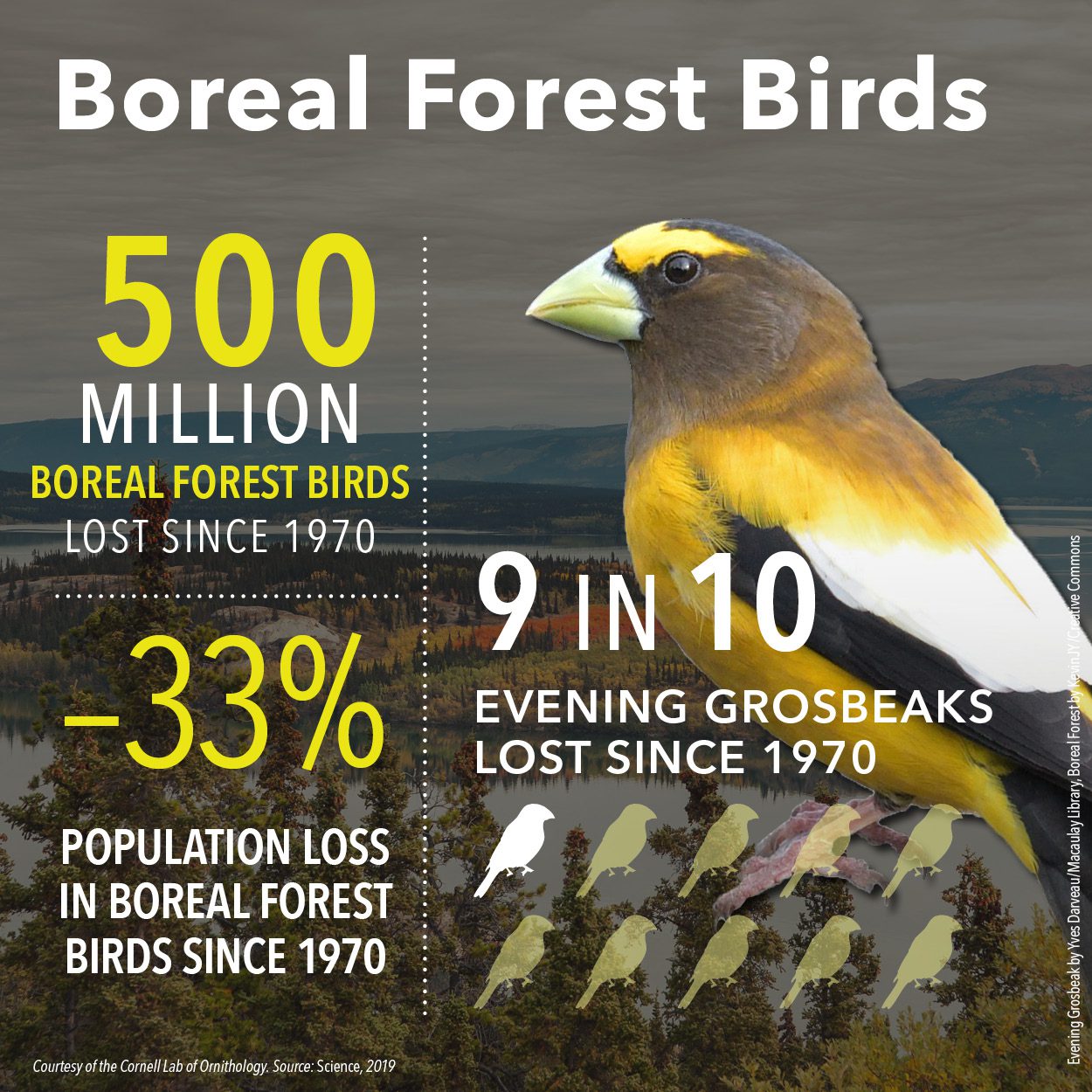
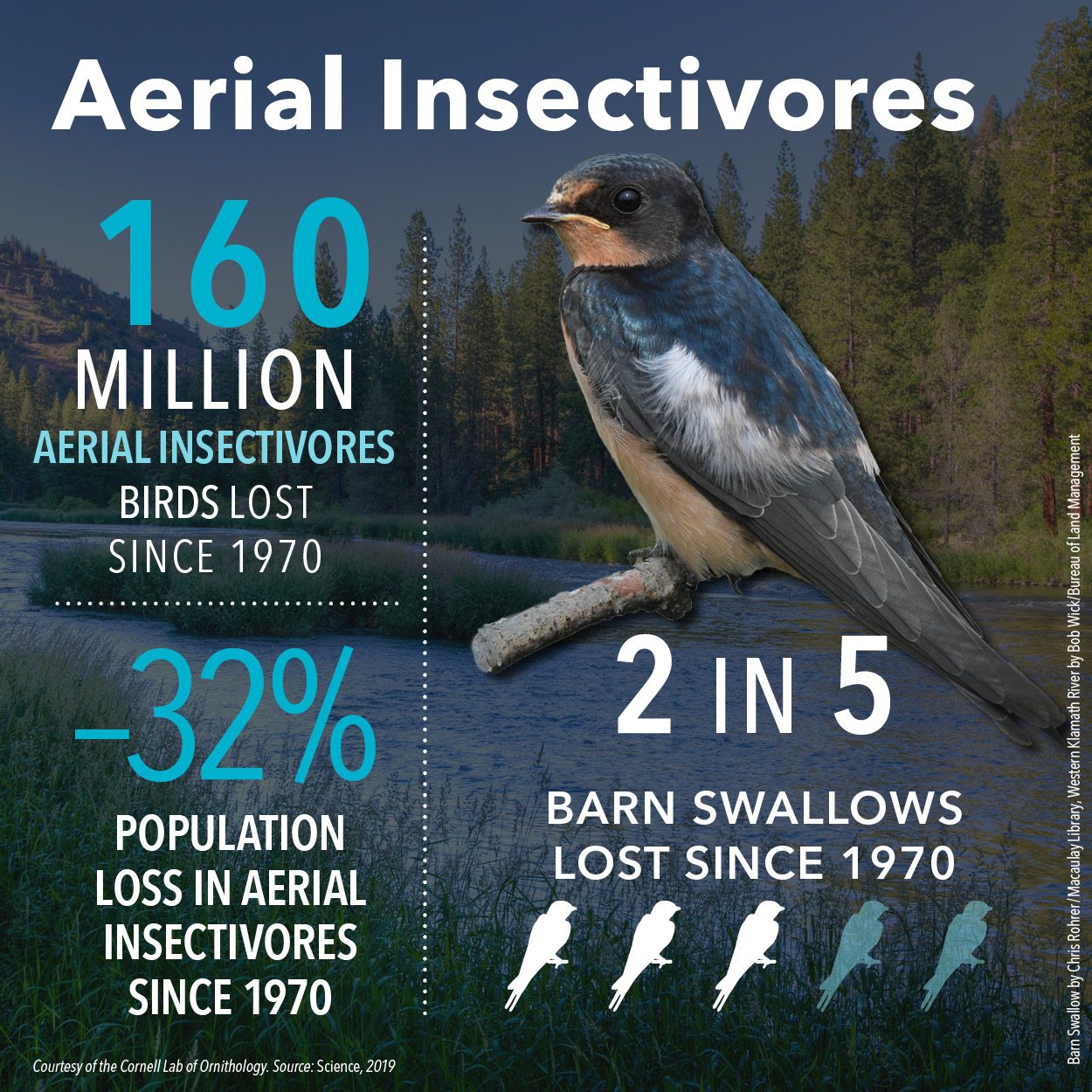
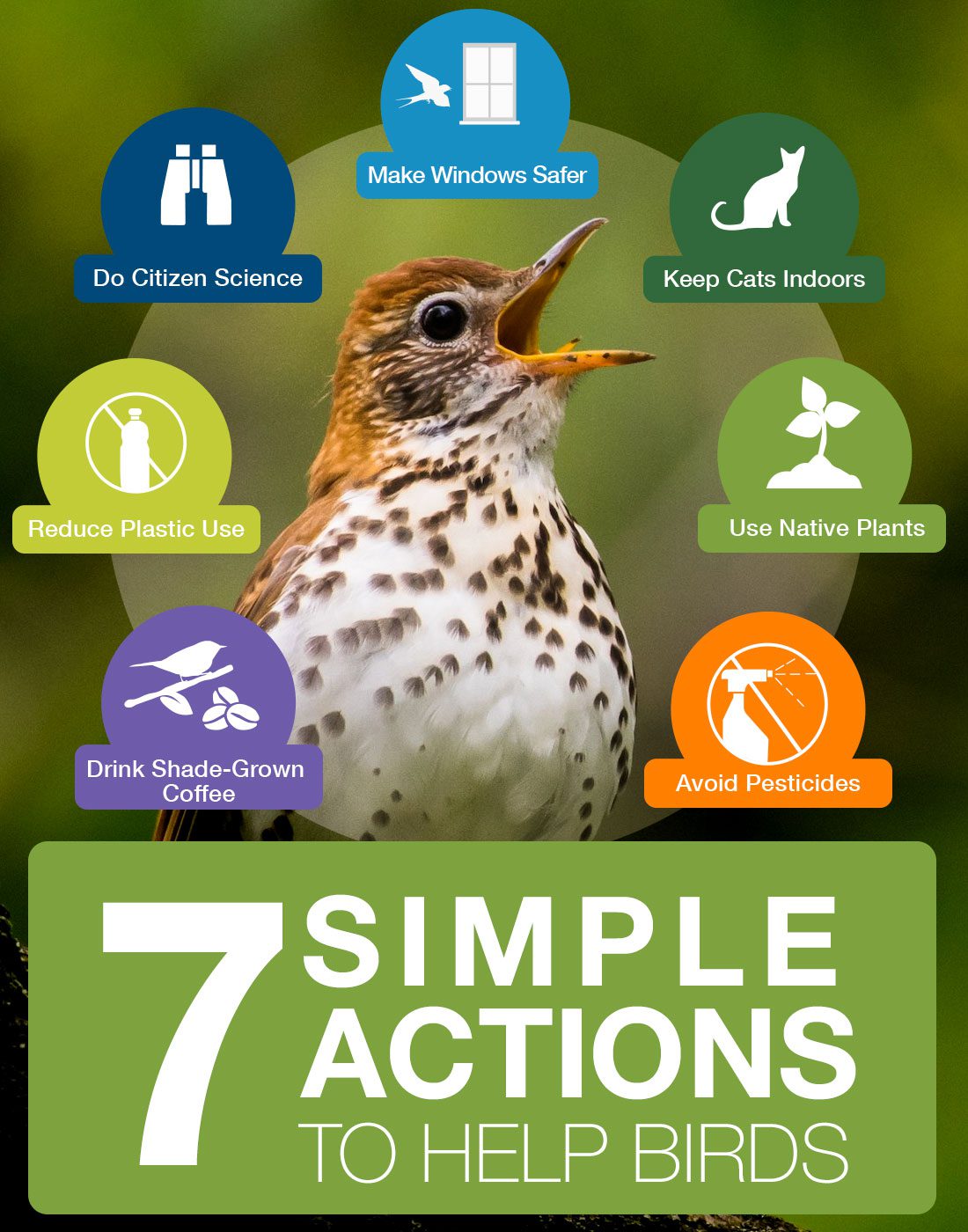
This Is a Problem Everyone Can Solve
7 Simple Ways to Help Birds
1.
Make Windows Safer, Day and Night
Simple adjustments to your windows can save birds’ lives.
2.
Keep Cats Indoors
Indoor cats live longer, healthier lives. Outdoor cats kill more birds than any other non-native threat.
3.
Reduce Lawn by Planting Native Species
The U.S. has 63 million acres of lawn. That’s a huge potential for supporting wildlife.
4.
Avoid Pesticides
Look for organic food choices and cut out some of the 1 billion pounds of pesticides used in the U.S. each year.
5.
Drink Coffee That’s Good for Birds
Shade-grown coffees are delicious, economically beneficial to farmers, and help more than 42 species of North American songbirds.
6.
Protect Our Planet From Plastics
91% of plastics are not recycled, and they take 400 years to degrade.
7.
Watch Birds, Share What You See
Bird watchers are one of science’s most vital sources of data on how the ecological world is faring.
Support Our Research
Support from our members helped make this vital work possible.
Now, our scientists must seek solutions that will stem further population declines. The future of birds and our natural world depends on it—and you can help.
Get the beautiful Living Bird magazine right in your mailbox
Let’s Tell People About This
If you’re on this page, chances are birds are already important to you—but most people don’t know about this finding. Can you help us take the news to them? Share these short videos on social media. Tweet about the research. Post an image to Instagram. Or just tell a friend the old-fashioned way—it all helps.
Share these videos:
- Click through to see our short videos about the declines, each featuring a different species. Choose your favorite bird and share the video post with your community.
- Baltimore Oriole
- Barn Swallow
- Dark-eyed Junco
- Snowy Owl
New finding says 1 in 4 birds have vanished in our lifetime. Let’s get together and #BringBirdsBack
TweetSave these infographics and share them on your Instagram feed to help people see how the birds we know and love are faring. Many trends are downward, but some positive trends illustrate what is possible when we take action.
Declining Birds

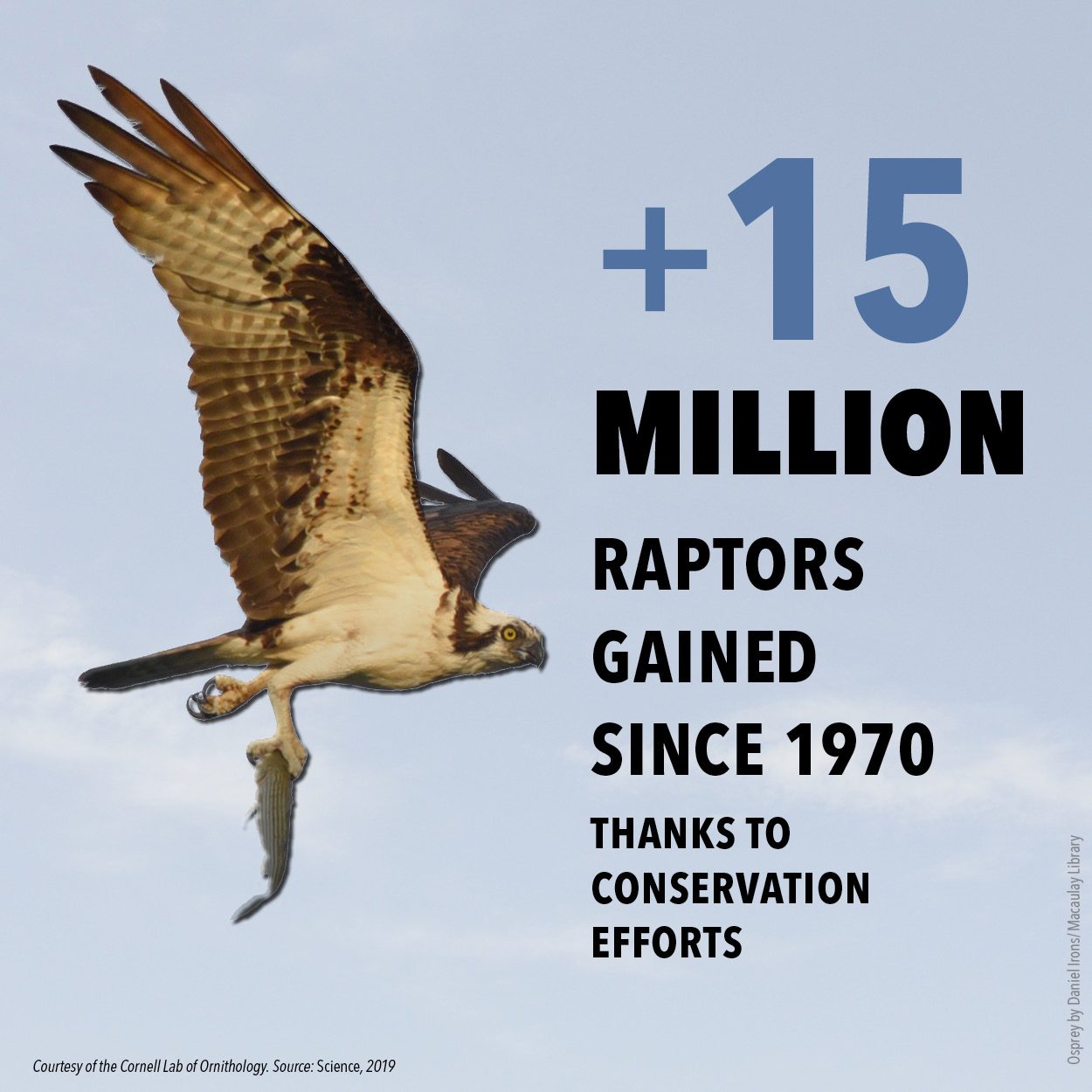
Links
- News Room
- Read the scientific paper
- New York Times op-ed by Cornell Lab director John Fitzpatrick and study coauthor Peter Marra
- Living Bird magazine article
- Commentary in Living Bird by Cornell Lab director John Fitzpatrick
- Cornell Chronicle article
Partners
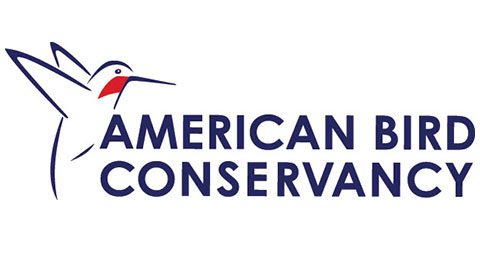
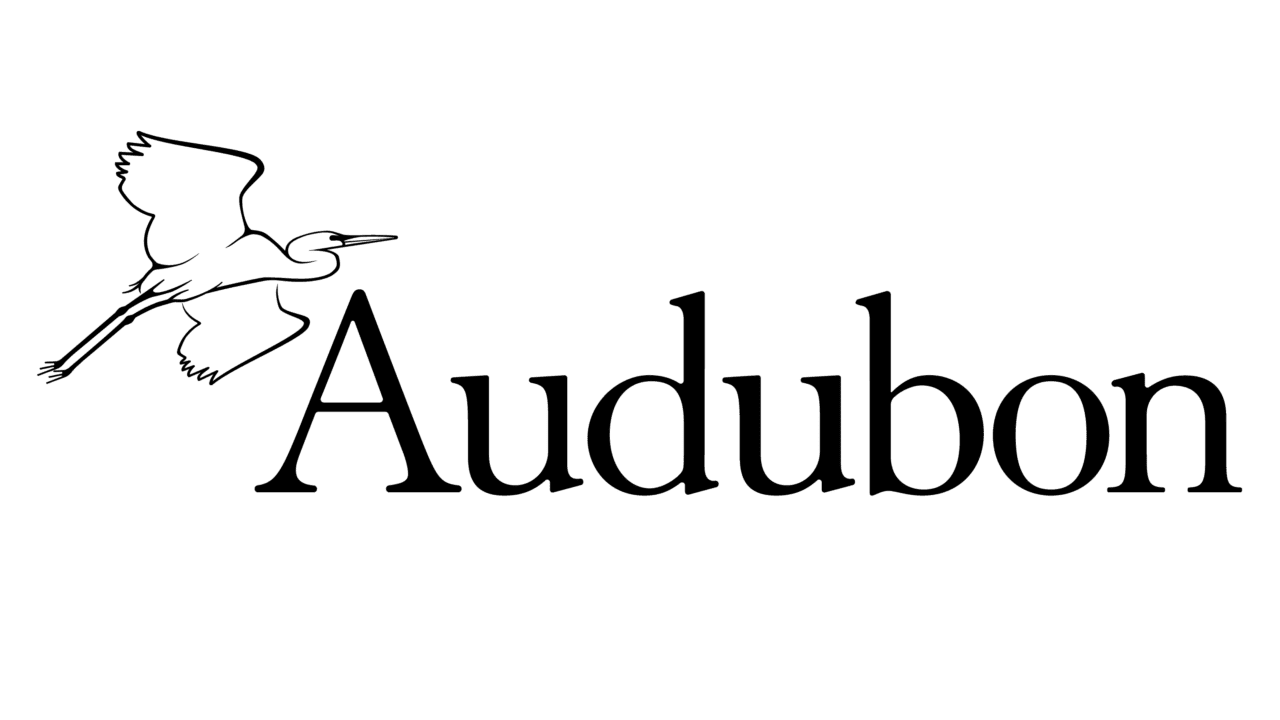
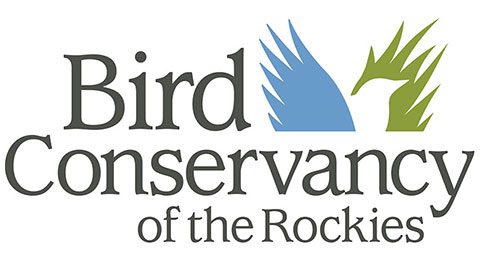


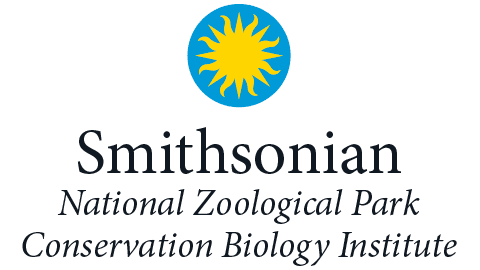
ABOUT THE STUDY
Critical data were contributed by citizen-science participants in the Audubon Christmas Bird Count, North American Breeding Bird Survey, and other bird-monitoring initiatives. The Partners in Flight Avian Conservation Assessment Database was a critical source for the data.
Join Our Email List
The Cornell Lab will send you updates about birds, birding, and opportunities to help bird conservation. Sign up for email and don’t miss a thing!
Golden-cheeked Warbler by Bryan Calk/Macaulay Library
